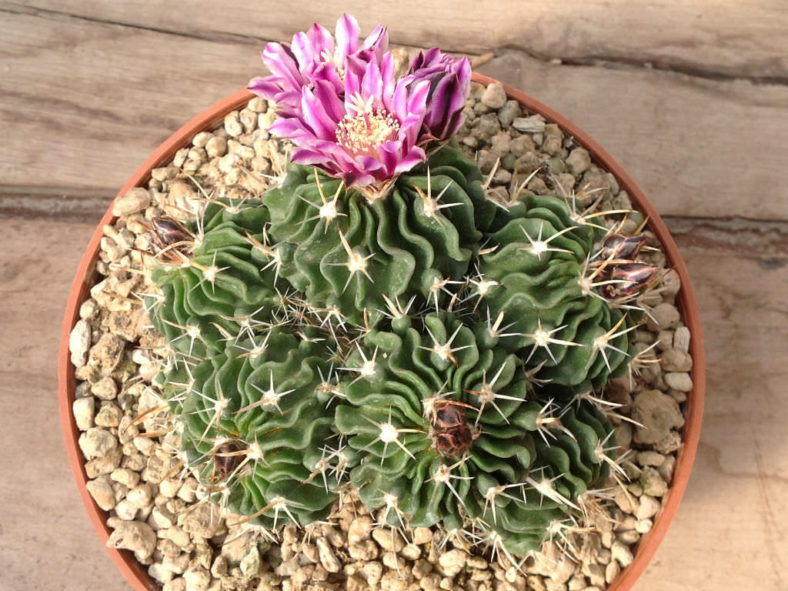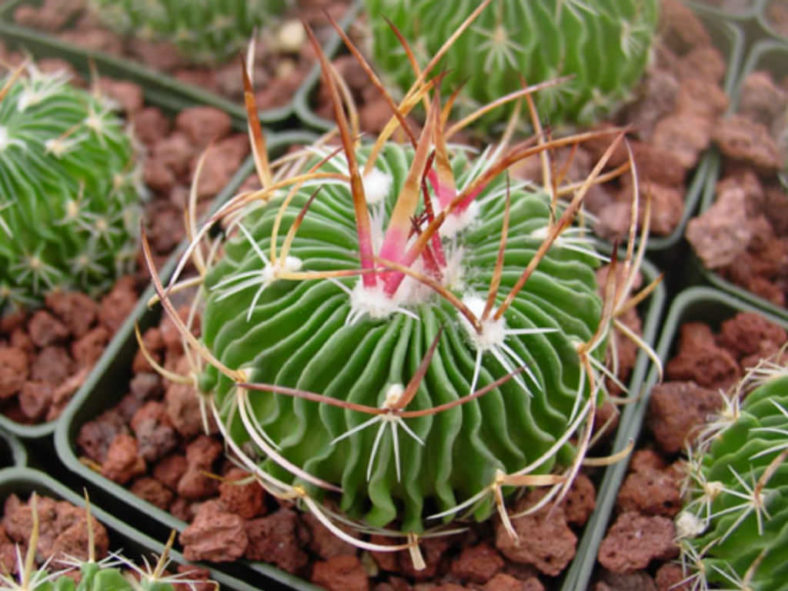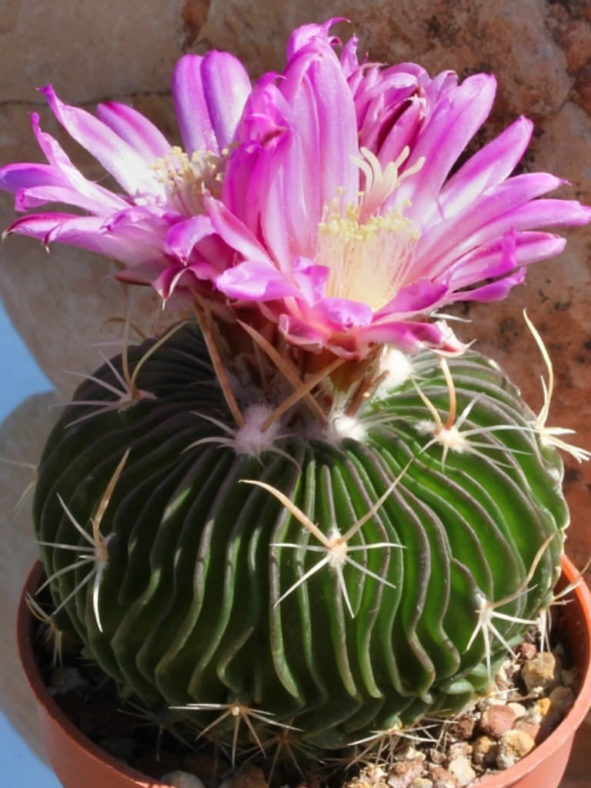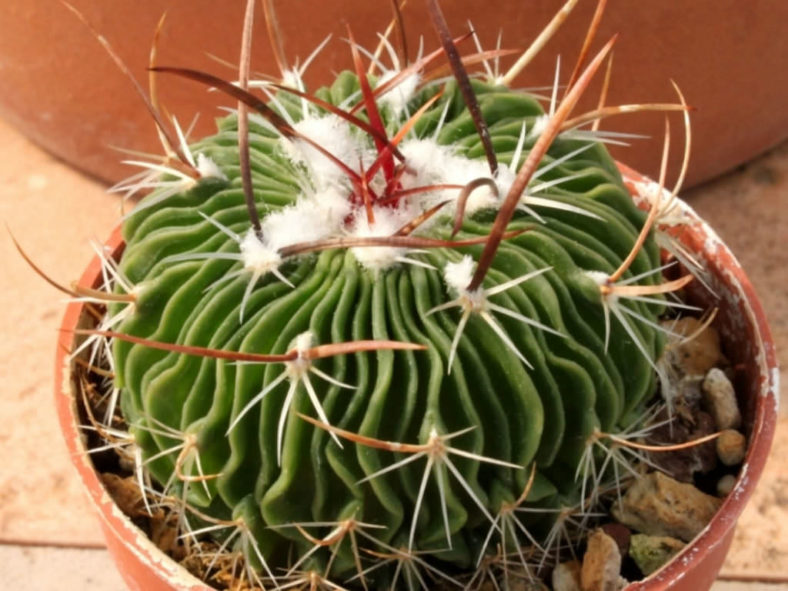Scientific Name
Stenocactus multicostatus (Hildm.) A. Berger ex A.W. Hill
Common Name(s)
Brain Cactus, Wave Cactus
Synonym(s)
Brittonrosea multicostata, Echinocactus multicostatus, Echinofossulocactus multicostatus, Efossus multicostatus, Stenocactus multicostatus subsp. multicostatus
Scientific Classification
Family: Cactaceae
Subfamily: Cactoideae
Tribe: Cacteae
Genus: Stenocactus
Origin
Stenocactus multicostatus is native to Mexico. It grows in the shrublands of Chihuahua, Coahuila, and Durango.
Description
Stenocactus multicostatus is a small cactus with depressed globose to somewhat cylindrical stems with up to 120 thin, sharp-edged, wavy ribs with narrow furrows between. The stems can grow up to 5 inches (12.5 cm) tall and up to 6 inches (15 cm) in diameter, solitary or occasionally clumping. They are grey-green to bright green and usually have one white-felted areole per rib, bearing three central and four radial spines. The central spines are papery, four-angled, curved, and up to 3 cm (1.2 in) long, while the radial spines are glassy white, straight or slightly curved, and up to 0.6 inches (1.5 cm) long.
The flowers are up to 2 inches (5 cm) in diameter, white to pinkish-purple, with a darker midvein on each petal, and appear in spring and summer.

Hardiness
USDA hardiness zones 9a to 11b: from 20 °F (−6.7 °C) to 50 °F (+10 °C).
How to Grow and Care
If you can grow cacti and succulents successfully, you can likely grow Stencactus without too much trouble. Their water and light requirements are fairly typical for many cacti species, including a cooling period in the winter to promote better blooming. Watering should be done carefully, allowing the plant to almost dry out between waterings. The cactus mustn't be exposed to prolonged dampness and sitting water. Never let your cactus sit in a dish of water. Instead of propagating your offsets, let the plant form a large cluster for the best viewing. Lastly, fertilize during the growing season for the best results.
Repot as needed, preferably during the warm season. To repot cacti, ensure the soil is dry before repotting, then gently remove the pot. Knock away the old soil from the roots, removing any rotted or dead roots. Treat any cuts with a fungicide. Place the plant in its new pot and backfill it with potting soil, spreading the roots as you repot. Leave the plant dry for a week or so, then begin to water lightly to reduce the risk of root rot.
See more at How to Grow and Care for Stenocactus.
Links
- Back to genus Stenocactus
- Succupedia: Browse succulents by Scientific Name, Common Name, Genus, Family, USDA Hardiness Zone, Origin, or cacti by Genus
Photo Gallery
Click on a photo to see a larger version.


